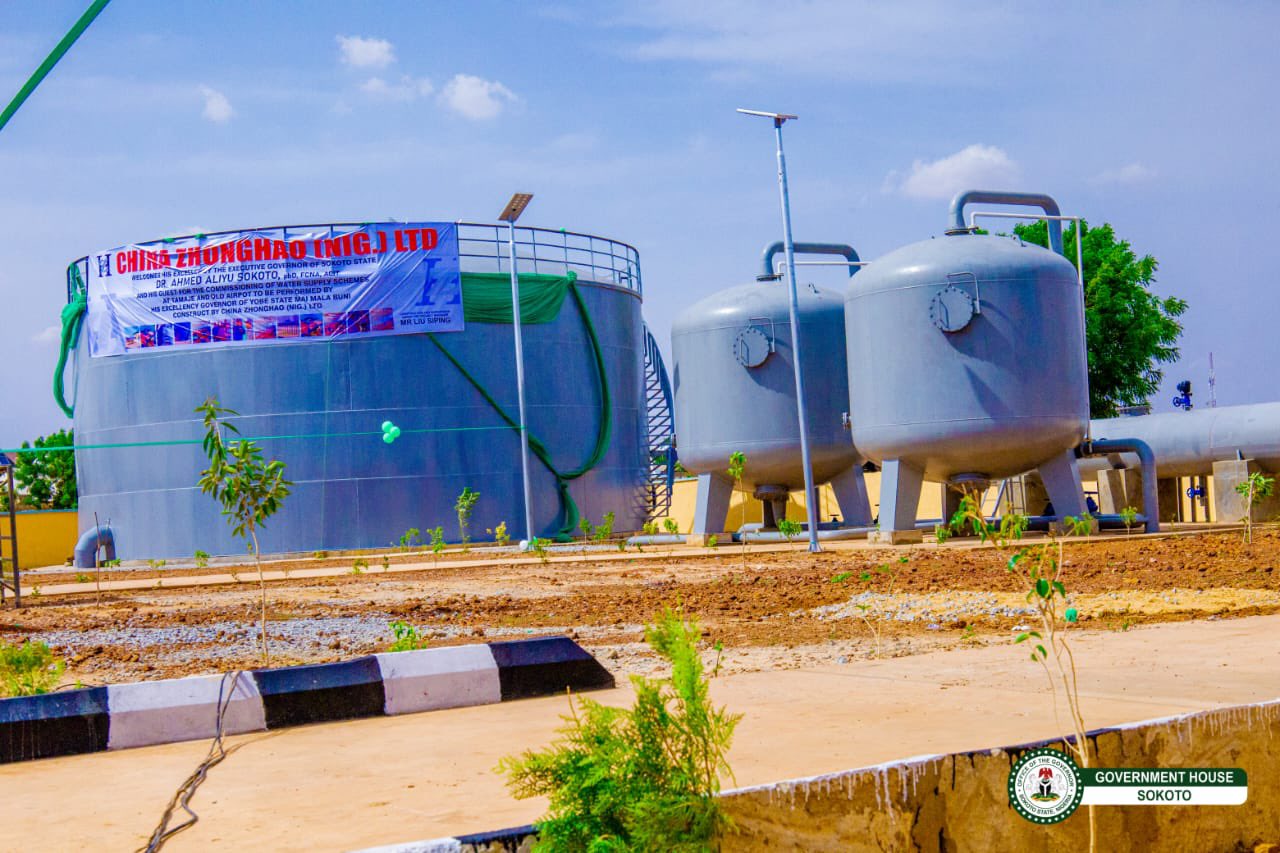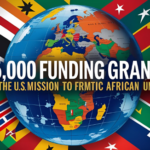By Isaac Atunlute
Residents of some parts of Sokoto State have been paying as much as ₦300 per 20 liters of water due to shattered infrastructure that has crippled city supplies and water purification systems.
But that might be coming to an end.
On Monday, Ahmed Aliyu, the state governor, commissioned a new water supply scheme in the Old Airport district of the state capital, with a capacity of three million gallons a day.
While the event was the inauguration of a single facility, it is part of a wider initiative aimed at restoring and expanding the supply of drinkable water to Sokoto State’s growing urban population.
It is one of six township schemes underway and part of the ₦14.1 billion investment to complete and revive the long-shelved projects undertaken during the period of the former governor, Aliyu Wamakko.
All six districts—Tamaje, Old Airport, Gagi, Mana, Runjin Sambo, and Ruga Liman—are fully operational and are expected to produce a combined total of 40 million gallons of water daily.
The districts were selected based on their populations and the level of demand, according to state officials.
It is “a promise fulfilled,” the governor said, and a major response to a long-time infrastructure deficit.
Residents in affected communities had for years struggled with irregular water supplies, and many had turned to using expensive vendors or unsafe sources.
By restoring and upgrading those facilities, including replacing outdated equipment and introducing backup power at treatment plants, the state hopes to break the cycle of water scarcity.
But the infrastructure is not what makes the project spectacular. It is the coordination and urgency behind it. From rushing to get treatment chemicals to providing the water board with backup power, the state has begun closing both the system gaps and equipment deficiencies that often derail such efforts elsewhere.
Though the complete 40 million-gallon capacity is in process, the 3 million gallons that came online this week is already a step in the right direction.
Local officials and contractors have been working to push delivery and accountability. This rapid-moving intervention model and coordinated implementation can be replicated in other affected areas, the government assured.
But the sustainability of the project in the long term would depend on proper maintenance, financing for chemicals, and proper community participation.
Experts caution that water facilities do not collapse due to the unavailability of equipment but as a result of poor governance, slow response to system breakdown, and a lack of education among the users.
In the meantime, Sokoto’s Old Airport community has a reason to cheer. Where citizens once lined up for costly water, now they stand in line for a guaranteed supply from newly fixed taps.
It’s a homegrown solution to a national problem and proof of the reality that, with political will and right planning, basic services can be restored wherever they are most needed.
Residents of Sokoto State have faced high water costs due to compromised infrastructure; however, recent developments may alleviate the issue. Governor Ahmed Aliyu has inaugurated a new water supply system capable of delivering three million gallons daily in the Old Airport district, part of a larger effort to restore the water supply across the growing urban areas of the state.
This initiative includes six districts and a ₦14.1 billion investment to complete and revive delayed projects from a previous administration.
The completed project aims to deliver 40 million gallons daily, promising a significant improvement in water access for residents who have long struggled with shortages and resorted to expensive water sources.
The successful rollout of this water supply scheme highlights quick and effective responses, including equipment upgrades and provision of essential resources and infrastructure.
While ensuring the system's long-term success relies on proper maintenance and resource allocation, the project’s current progress showcases the positive outcomes of coordinated efforts.
Sokoto's Old Airport community is already benefitting as residents now have affordable and reliable access to clean water, showcasing the potential of similar interventions to address infrastructure deficits in other regions.






